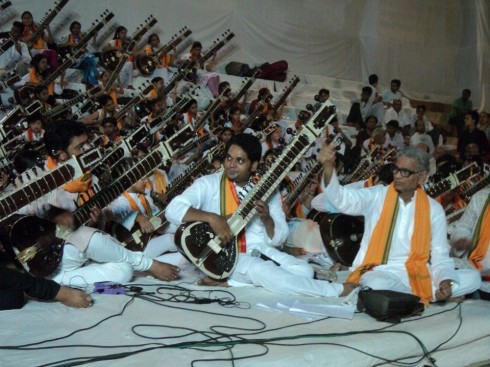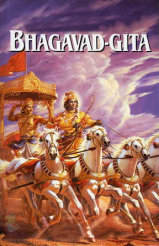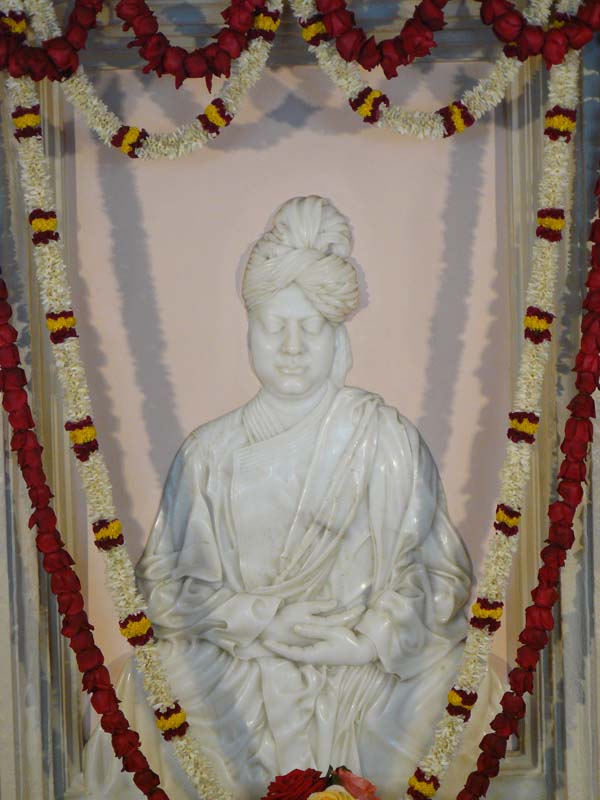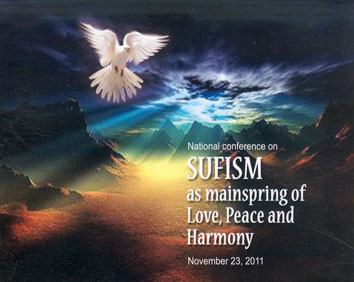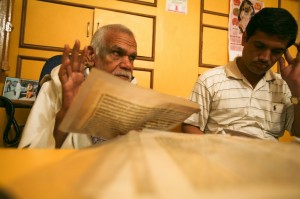Jyotish

Mishras 2012 Europen Musical tour
Dear Friends,
We are in Varanasi now and wish all of you. We are happy to inform you that our tour for Europe this year will be in October/ November 2012. So we are starting now for booking the Concert dates of Europe and just like to inform you that if you want to book any concert of us then please contact us soon as now we are booking the dates.
We are coming three musician Pandit Shivnath Mishra, myself Deobrat Mishra on Sitar and Prashant Mishra on Tabla. So please contact us soon for any information you need.
Hope to hear from you soon.
Yours, Deobrat Mishra
Sitar Artist.
Contact us at: mishramusic@hotmail.com
Website: www.music-of-benares.com
Cell: 0091-9451586700
Note: we are also sending you a attachment of recent concert photos and Video Link on youtube we did with 108 Sitar players in Varanasi to save holy River Ganges. Please have a look. You can see more picture of it on my facebook account: Deobrat Mishra
My father Pandit. Shivnath Mishra made a history in Varanasi-India to conduct a orchestra of 108 sitar players. Total musician where 151 including Tabla players and Flute players.
Varanasi (Sanskrit: वाराणसी ) is a city situated on the banks of the River Ganges in the Indian state of Uttar Pradesh, 320 kilometres (199 mi) southeast of state capital Lucknow. It is regarded as a holy city by Buddhists and Jains, and is the holiest place in the world in Hinduism (and center of earth in Hindu Cosmology). It is one of the oldest continuously inhabited cities in the world and probably the oldest of India. The Kashi Naresh (Maharaja of Kashi) is the chief cultural patron of Varanasi and an essential part of all religious celebrations.The culture of Varanasi is closely associated with the River Ganges and the river’s religious importance. The city has been a cultural and religious centre in North India for several thousand years.
The Benares Gharana form of Indian classical music developed in Varanasi, and many prominent Indian philosophers, poets, writers, and musicians resided or reside in Varanasi, including Kabir, Ravidas Their Guru Swami Ramanand, Trailanga Swami, Munshi Premchand, Jaishankar Prasad, Acharya Shukla, Ravi Shankar, Girija Devi, Hariprasad Chaurasia, and Bismillah Khan. Tulsidas wrote Ramacharitamanas here, and Gautama Buddha gave his first sermon at Sarnath located near Varanasi (Kashi). Varanasi is home to four universities: Banaras Hindu University, Mahatma Gandhi Kashi Vidyapeeth, Central Institute of Higher Tibetan Studies and Sampurnanand Sanskrit University. Residents mainly speak Hindi and Kashika Bhojpuri, which is closely related to the Hindi language. People often refer to Varanasi as “the city of temples”, “the holy city of India”, “the religious capital of India”, “the city of lights”, and “the city of learning.”
Mishras Press release:
Very rare to see three generation master musician’s on same stage.
11th GENERATION FATHER AND SON SITAR MASTERS of Benares Gharana
From their home city of Benares, an ancient spiritual centre of traditional music and Indian culture, “The Mishras” are bringing classical North Indian Ragas and meditative music to the world audience, gifting the audience with a fabulous performance and a spiritual experience. Join this father and son duet of two of the worlds finest Sitar Artist and Prashant Mishra on Tabla grandson of Pandit Shivnath Mishra as they inspire one another to new levels of loving interplay.
PANDIT SHIVNATH MISHRA
Pandit Shivnath Mishra was born on the 12th of October 1943, in Varanasi (North India). Also known as “Legend of the Sitar”, he is the 10th generation of the prominent Benares Gharana lineage of top class singers including Pandit Bade Ramdas Mishra and Panditji Great Grand Father. Since childhood, his highly musical family could see signs of a masterful musician in him. When Panditji was five years old, he began studying vocal music with his father, Badri Prashad Mishra, and his uncle-guru, Pandit Mahadev Prashad Mishra. However, when he was eight his musical inclination led him to study the sitar. In a family of great classical Indian vocalists, he was the first one who mastered the sitar.
Due to the vocal influence from his family as well as the Benares Gharana tradition, he is one among few artists in Contemporary India who ‘sing inside’ while playing a musical instrument. His lively, powerful and unique style has praised him with innumerous titles by the most representative authorities and institutions of music in and outside India. In 1966, when he was only twenty-three, he received a gold medal in the All India Music Conference, in Calcutta.
1979 marks the beginning of his performances abroad. Sine then, he has been constantly on tour in many foreign countries, among them Germany, Italy, France, Luxembourg, Switzerland, Austria, Japan, Holland etc. In 1999, he gave his first concert in the USA and Canada. During his tours, he has performed with several international jazz artists such as John Handy, Paul Horn, David Freezen, Ben Conrad, Berred Kworrase, George Figgler Aimester among others. Moreover, he participated in many conferences and recitals including the Condolence Metal of Late Prime Minister Mrs. Indira Gandhi, in Germany. He also took part in programs broadcast by the BBC Television and the German Radio.
Being one of India’s premiere sitar artists of all times, Pandit Shivnath Mishra was the Head of the Music Department at the Sampurnanand Sanskrit University of Benares, in Varanasi, for 36 years. At this time, in 1994, he formed the “Music of Benares” which consists of a group of North Indian (Hindustani) classical musicians whose aim is to familiarize audiences all over the world with Hindustani music in general and the Benares Gharana in particular. What is characteristic of the Benares Gharana is exactly the singing of the Thumri, a light Indian classical music that is highly ornamental and thus very emotional and expressive. At a time when many different Gharanas mix with each other, the “Music of Benares” group keeps this ancient tradition alive.
Incorporation of this style with the “Jugalbandi” presentation, in which there are two solo artists sharing the stage, has created a unique synthesis of classical and folk that appeals to audiences everywhere. But this is not just Jugalbandi, this is a duet between a Guru and his Shishya (disciple) and, in this case, between father and son. Seeing this special interaction on stage is no doubt an unforgettable and mesmerizing experience.
Deobrat Mishra – biography
Deobrat Mishra is no doubt one of the most energetic and innovative sitar artists of India. Selectivity, melody and rhythmic complexity are typical features in his lively playing style.
Born in 1976, he represents the 11th generation of the Benares Gharana tradition. As a young child he studied tabla with his mother, Pramila Mishra, who is the granddaughter of the well-known tabla player Pandit Baiju Mishra. He started by studying vocal music with his father at the age of five and began his sitar lessons a year later. That same year, after only six months of studying the sitar, he gave his first public performance on stage. Five years later, he performed for the first time on the All India Radio.
Since 1994 he has been touring throughout Europe with his father. In the same year he was chosen to receive the award of the best young sitar player of India. In 2000 he received the “Jewels of Sound Award” in Mumbai. His many projects include music workshops, solo performances for radio and television as well as world music programs with Indian and European artists. Moreover, he is the one in charge of cultural events and music lessons provided by the Academy of Indian Classical Music, the school he founded along with his father, Pandit Shivnath Mishra, in 2006.
Recently, he received a Masters degree in sitar from the Prayag Sangit Samiti in Allahabad. Among many other projects, the Mishras performed and recorded their music with the Western Symphony Orchestra of Italy in 2005. Nowadays, they fully dedicate their art to similar projects including annual tours around the world.
Above all, the Mishras (father and son) serve as two of India’s leading cultural ambassadors of our times
Prashant Mishra is one of the best young Tabla player of benares music tradition. When he was five he started to learn tabla with the family member of Biru Mishra of Varanasi also studying Tabla presently with Mr.Chakkan lal Mishra(Student of Great Tabla player Anokhelal Mishra..
Soon after few years of hard practice with his grandfather Pandit Shivanath mishra and uncle Deobrat mishra he was able to perform with Mishras His skills beautifully compliment and support the Mishras in their concerts.
http://timesofindia.indiatimes.com/topic/Aviral-and-nirmal-flow-of-the-Ganga/news
In 2004 he won first prize in Tabla competition organized by Sangeet Natak Academy Uttar Pradesh India. He received many awards for his tabla playing at many different places. The Mishras tour will help to support the Academy Of Indian Classical Music School in Varanasi, India.
Additionally, the Mishras support their Academy of Music in Benares, India where they keep alive the tradition of their music amongst young musicians. Every January and February, the Academy is open to international students of all ages and skill levels. These study tours to India are a cultural experience combining ashram style living and intensive music instruction in one of the world’s oldest cities.
Visit: www.benaresmusicacademy.co
For more information, contact Deobrat Mishra: mishramusic@hotmail.com
Visit our website: www.music-of-benares.com
http://www.gangaaction.com/
http://
http://
#Previous #articles #videos #benares #gharana
#Previous #articles #save #ganga #water #humanrights
Note: Mishra or Misra (Hindi: „मिश्र“ „मिश्रा“) is a Hindu Brahmin surname found mostly in the northern and central parts of India. It is one of the most widespread Brahmin surnames in the fertile Gangetic plain region and in the Indian states of Delhi, Bihar, Uttar Pradesh, Uttarakhand, Madhya Pradesh, Rajasthan, Orissa, Assam and West Bengal. It is also found in countries such as Guyana and Trinidad and Tobago under the anglicized version of Misir, due to migration owing to agricultural/plantation employment. The surname is also found in Nepal, Fiji and Mauritius, as well as in other Indian diaspora communities.
In Hinduism, Brahmin refers to the class of educators and preachers. It is the highest class in the caste system. There are many references in the Ramayana and Mahabharata about the importance of a Brahmin. In the Vedic period, the Brahmins preferred isolation and solely dedicated their life to propagating knowledge and Dharma. However Misras have historically been martial Brahmins and in earlier years, many were drafted into the army.

Themenabende im Monat Mai / Juni mit Shri Sarvabhavana
Wir laden herzlich ein zu den Vorträgen und Veranstaltungen mit Shri Sarvabhavana im Monat Mai/ Juni VORTRÄGE in BERLIN / DRESDEN & PIRNA
The Bhagavad Gita (pronounced: [ˈbʱəɡəʋəd̪ ɡiːˈt̪aː] (![]() listen)), also referred to as Gita, is a 700-verse Hindu scripture that is part of the ancient Sanskrit epic Mahabharata. Due to its presence in the epic, it is classified as a Smṛiti text. However, those branches of Hinduism that give it the status of an Upanishad also consider it a Śruti or „revealed text“.[1][2] As it is taken to represent a summary of the Upanishadic teachings, it is also called „the Upanishad of the Upanishads.“[3] HERE
listen)), also referred to as Gita, is a 700-verse Hindu scripture that is part of the ancient Sanskrit epic Mahabharata. Due to its presence in the epic, it is classified as a Smṛiti text. However, those branches of Hinduism that give it the status of an Upanishad also consider it a Śruti or „revealed text“.[1][2] As it is taken to represent a summary of the Upanishadic teachings, it is also called „the Upanishad of the Upanishads.“[3] HERE
Free Will…now in english! http://www.vedic-guide.de/en/texte/freier-wille
http://www.facebook.com/shrisarvabhavana
SWAMI VIVEKANANDA’S BIRTHDAY CELEBRATION : Live Webcast
http://www.belurmath.org/news_archives/swami-vivekanandas-birthday-celebration-live-webcast/
http://www.belurmath.org/news_archives/2012/01/10/national-youth-day-12-january-2/
Previous #articles #videos # development #reliefwork
http://ramakrishna.org Ramakrishna – Vivekananda Center of New York
http://en.wikipedia.org/wiki/Vedanta

NATIONAL CONFERENCE ON „SUFISM“
Conference on Sufism „as mainspring of Love, Peace and Harmony“
Opening Date: Wednesday, 23 November 2011
Closing Date: –
Additional Information : at 3.00 p.m at Lok Virsa Islamabad
The Gilgit Agency was a political unit of British India, which administered the northern half of the Princely state of Jammu and Kashmir. The Gilgit Agency was created in 1877 and was overseen by a political agent of the Governor-General of British India. The seat of the agent was Srinagar. In 1935, the Gilgit Agency leased the territory comprising the agency from the Maharaja of Jammu and Kashmir, Hari Singh, for a period of sixty years. This lease and the Gilgit Agency ceased to exist when Pakistan and India became independent countries in 1947. HERE
LOK VIRSA – AN INTRODUCTION :
Lok Virsa (The National Institute of Folk & Traditional Heritage) works towards creating an awareness of cultural legacy by collecting, documenting, disseminating and projecting folk & traditional heritage. Surveys and documentation of traditional culture is central to the objectives of the institute. The Lok Virsa delve into and surveys are conducting by mobile recording and filming units. Dedicated individuals undergo the rigorous field work, to bring back valuable results to the central archives and production facilities housed at the Lok Virsa complex at Garden Avenue Shakarparian Hills Islamabad.
Lok Virsa is an affiliate member of UNESCO, The World Craft Council, International Council of Music, The Asian Cultural Centre for UNESCO, The International Council of Museums and similar other world organizations for the dissemination of art products abroad.
http://www.rferl.org/section/Pakistan
http://www.facebook.com/Gilgit Baltistan
http://www.facebook.com/kashmirsufismsociety
http://www.facebook.com/pakistanyouthforumpage
http://hunzalandslide.blogspot.com/
http://www.facebook.com/Indian Youth Climate Network(IYCN)
http://de.wikipedia.org/Hunza Burusho people, Hunza-Mythos
http://en.wikipedia.org/Former State of Hunza (princely state)
http://www.facebook.com/International Organization of Folk Art (IOV)
https://www.facebook.com/unesco Educational, Scientific and Cultural Organization (UNESCO)
Zamana is a public interest space for learning, reflection, and action on Pakistan.
Explore: Whose Land? Whose Food?
In its first issue, Zamana delves into the thorny subject of land and food rights in Pakistan. The focus is prompted by recent news reports that amidst rising hunger and food crises, the Government of Pakistan plans to give away thousands of acres of farmland to Saudi Arabia and other foreign investors. Zamana invites more commentaries on this issue. Please send your perspective to info @ zamana.org. Further Infos: http://farmlandgrab.org/
Act: Our Land, Our Food, Pakistan is not for Sale
Sign the petition to raise your voice against land leasing to foreign clients.
UPDATE 23.11.2011 Final Declaration: Stop Land-Grabbing Now!
The Oakland Institute http://www.oaklandinstitute.org
More than a hundred civil society organizations have submitted a document entitled „Time to Act – Agriculture and Food Security and Rio+20“ as input to the UN Conference on Sustainable Development (the Rio+20 conference). The submission outlines the key actions that are needed to achieve viable food systems based on agroecological and other forms of sustainable production.
http://www.facebook.com/oak.institute
http://www.ourworldisnotforsale.org/members
http://www.facebook.com/road2rio20
A global youth mobilization towards the UN Conference on Sustainable Development (Rio+20).
http://www.timetoactrio20.org/ 20 years after the Rio Earth Summit, the planet is in a deeper environmental, energy and financial crisis.The United Nations Conference on Sustainable Development (UNCSD) in Rio de Janeiro in 2012 might be just another high-level conference stating the need to eradicate hunger and poverty, stop climate change, the loss of biodiversity, soil erosion and other serious environmental problems – and then, after the conference, life goes on as before. But it can be different. It has a historical opportunity to make important decisions and agree on actions that actually do eradicate hunger and poverty, and save the environment. It’s time to act!
Many civil society organizations have signed on to a document with proposals on issues linked to food and agriculture for the Rio2012-conference. Download the document (PDF) HERE. Download the document in Word format (doc) HERE.
If you have comments and suggestions for changes in this document, and if your organization wants to support the document, please send a mail to rio2012agcso@gmail.com
The document is available in English, Spanish, French and German
UPDATE 24.11.2011 @guardian – Africa’s great ‚water grab‘ Foreign investors aren’t just after land in Africa. Access to water is essential – which can bring them into direct competition with the needs of local communities.
This article is about a right to water as a human right under international law. For a discussion of water usage laws in common law, see Water right. http://en.wikipedia.org/wiki/Right_to_water
WORLD CONFERENCE ON HUMAN RIGHTS
Vienna, 14-25 June 1993
VIENNA DECLARATION AND PROGRAMME OF ACTION
Note by the secretariat
Attached is the text of the Vienna Declaration and Programme of Action, as adopted by the World Conference on Human Rights on 25 June 1993.
1. The World Conference on Human Rights reaffirms the solemn commitment of all States to fulfil their obligations to promote universal respect for, and observance and protection of, all human rights and fundamental freedoms for all in accordance with the Charter of the United Nations, other instruments relating to human rights, and international law. The universal nature of these rights and freedoms is beyond question.
… Emphasizing that the Universal Declaration of Human Rights, which constitutes a common standard of achievement for all peoples and all nations, is the source of inspiration and has been the basis for the United Nations in making advances in standard setting as contained in the existing international human rights instruments, in particular the International Covenant on Civil and Political Rights and the International Covenant on Economic, Social and Cultural Rights…
http://www.unhchr.ch/huridocda/huridoca.nsf/%28symbol%29/a.conf.157.23.en
http://www.amnesty.org/en/economic-social-and-cultural-rights #video
Wien Besuch Shri Sarvabhavana 2011
Namaste liebe Freunde,
ein letztes Mal für dieses Jahr kommt Shri Sarvabhavana nach Wien um Beratungen zu geben. Er wird am Sonntag den 23.10 in Wien ankommen. Vielleicht gibt es die Möglichkeit auch am Sonntag Nachmittag Termine anzubieten, aber nur falls dies dringend notwendig ist. Ansonsten besteht das Angebot am Montag einen von sechs Terminen und am Dienstag einen von drei Terminen wahrzunehmen. Am Mittwoch(Nationalfeiertag Ö) wird es einen spirituellen Vortrag in Klagenfurt geben. Genaue Infos auf Anfrage.
Zusammenfassung der Beratungszeiten:
- 23.10.2011 Sonntag: nur in Ausnahmefällen: Nachmittags, bzw. Abends
- 24.10.2011 Montag: 10 – 11 Uhr, 12 – 13 Uhr – sowie: 17 – 18 Uhr, 18 – 19 Uhr
- 25.10.2011 Dienstag: 10 – 11, 12 – 13
Weiters gibt es eine neue Webseite von Shri Sarvabhavana, ein Blick darauf lohnt sich: www.vedic-guide.de. Anmeldung wie immer unter spiritualgrowth@gmx.at und der Tel.Nr.: 069917073418
Es sind noch Termine frei. Weiters gibt es auch noch freie Plätze für eine von unseren zwei Palmblattbibliotheksreisen nach Indien:
Sufi Music Of Kashmir (Sufiyana Mousiqui)Part 1
Ghulam Mohamad Saznawaz is the only existing master of Kashmiri Sufiyana Music in the world. The most tragic part of Kashmiri sufiyana music is that with the Maestro Ghulam Mohamad Saznawaz the art will be lost to posterity, now very old with his age the mastero has opened a school to teach Kashmiri Sufiyana Music free of charge but this school does not attract many students from Kashmir because of the religious and social prejudice among the majority of Kashmiris. This is sad but its true that still musicians are considered as of a lower class or of low moral and as if they can not do something useful thats why they chose to be musician.
http://saznawazgharana.blogspot.com/
http://www.facebook.com/SuFiYaNa MuSiQuI Of KaShMiR
With the goal of uniting conservation, communities and sustainable travel, TIES is committed to promoting the principles of ecotourism and responsible travel around the world.
http:// www.disappearancesinkashmir.com/
http://www.hrw.org/legacy/reports/1999/kashmir/
Mountain Minorities and Indigenous Peoples

NGO Development Projects Active in Tibet
About ICIMOD – The International Centre for Integrated Mountain Development, ICIMOD, is a regional knowledge development and learning centre serving the eight regional member countries of the Hindu Kush-Himalayas – Afghanistan, Bangladesh, Bhutan, China, India, Myanmar, Nepal, and Pakistan – and based in Kathmandu, Nepal.
Globalisation and climate change have an increasing influence on the stability of fragile mountain ecosystems and the livelihoods of mountain people. ICIMOD aims to assist mountain people to understand these changes, adapt to them, and make the most of new opportunities, while addressing upstream-downstream issues. We support regional transboundary programmes through partnership with regional partner institutions, facilitate the exchange of experience, and serve as a regional knowledge hub. We strengthen networking among regional and global centres of excellence. Overall, we are working to develop an economically and environmentally sound mountain ecosystem to improve the living standards of mountain populations and to sustain vital ecosystem services for the billions of people living downstream – now, and for the future.
International Mountain Day, celebrated on December 11, gives us an opportunity to reflect on the relevance of mountains for the world. This year the International Mountain Day theme focuses on indigenous peoples and other minorities living in the mountains. The purpose is both to highlight the threats and challenges faced by these communities, and to acknowledge the invaluable knowledge they have and the contributions they can make towards overcoming global challenges of poverty and loss of diversity in a rapidly changing world.
A majority of the world’s indigenous women and men live in mountain regions, many on the margins of society and facing poverty and exclusion. The Hindu Kush-Himalayan region has some of the highest diversity of indigenous peoples and other minorities in the world. An ICIMOD report identified more than 600 living languages in the Himalayas, 400 spoken by less than 100,000 people. According to current forecasts, ninety per cent of all languages could disappear within 100 years. The loss of these languages not only erodes an essential component of a group’s identity, it is also a loss to heritage for all humankind.
The UN General Assembly adopted the UN Declaration on the Rights of Indigenous Peoples in September 2007, marking an important step in international efforts to preserve the identity of indigenous peoples. However, implementation has a different speed and different levels of commitment in different countries.
In agricultural terms, mountains are often considered ‘marginal lands’, unsuitable for modern commercial farming which focuses on cultivation of single crop varieties for large markets. Indigenous mountain people and other mountain communities continue to use traditional practices and techniques including sophisticated terracing systems, water transportation and irrigation schemes, and a combination of pasture, forestry and farming practices. Indigenous women and men serve as custodians of this traditional knowledge on how to farm under difficult mountain conditions, and how to conserve important reservoirs of agricultural biodiversity.
They sustainably farm a wide variety of crops that are adapted to a range of different elevations, slope conditions, and micro-climates, and this knowledge will be of great, if as yet little noticed, value in the world’s efforts to adapt to climate and other drivers of change. The autonomous adaptation practiced by mountain communities consists of community-based interventions that address underlying causes of vulnerability and reduce the risk of possible adverse impacts of climate change by building upon the existing rich indigenous knowledge base on adaptation to environmental change and helping to strengthen the resilience of the communities. Women especially play a critical role in gendered indigenous knowledge. Their roles and expertise have yet to be acknowledged, but has great potential for adapting to multiple drivers of change.
Indigenous mountain communities are connected to the land, the environment, and natural resources in ways that are often inextricably intertwined and therefore expressed in spiritual and socio-cultural terms. Respecting this worldview, and preserving the languages, music, artwork, folk tales, culture, meanings, and myths that express it, is critical for the survival of indigenous communities in mountain areas. This ‘intangible heritage’ also enriches the global community, providing inspiration and insights for realising a more sustainable relationship between humankind and the environment.
A scene from Tibetan Documentary „Leaving Fear Behind,“ shows a nomad school in Tibet (Amdo) working to preserve Tibetan Language and culture as it’s very existence is under threat from Chinese Government policies. Find out more: http://studentsforafreetibet.org Leaving Fear Behind: The Film the Chinese Government Doesn’t Want the World to See. // sumit sadhak practicing handstand in himalyas on the bank of ganga river one of the most important places for yogis.
The involvement of indigenous mountain communities is an important prerequisite for sustainable mountain development. Therefore, as governments work toward addressing mountain development priorities, it is critical that they live up to their commitments outlined in the UN Declaration on the Rights of Indigenous Peoples.
We hope that this year’s International Mountain Day will help to increase awareness of the central role of Minorities and Indigenous Peoples for mountain development, and to motivate all citizens, policy makers, and development actors to recognise the importance of their contribution to sustainable development. We trust that the Day will encourage organisations to invite indigenous and traditional mountain communities to participate actively in national and international efforts to understand and adapt to the multiple drivers of change, including climate change, in the mountains of the world.
With best wishes, Andreas Schild http://www.icimod.org
Culture and Development – Placing culture at the heart of development policy constitutes an essential investment in the world’s future and a pre-condition to successful globalization processes that take into account the principles of cultural diversity. It is UNESCO’s mission to remind all States of this major issue.
As demonstrated by the failure of certain projects underway since the 1970s, development is not synonymous with economic growth alone. It is a means to achieve a more satisfactory intellectual, emotional, moral and spiritual existence. As such, development is inseparable from culture. Strengthening the contribution of culture to sustainable development is a goal that was launched in connection with the World Decade for Cultural Development (1988-1998). Ever since, progress has been made thanks to a corpus of standard-setting instruments and demonstration tools such as cultural statistics, inventories, regional and national mapping of cultural resources.
In this regard, the major challenge is to convince political decision-makers and local, national and international social actors to integrating the principles of cultural diversity and the values of cultural pluralism into all public policies, mechanisms and practices, particularly through public/private partnerships.
This strategy will aim, on the one hand, at incorporating culture into all development policies, be they related to education, science, communication, health, environment or tourism and, on the other hand, at supporting the development of the cultural sector through creative industries. By contributing in this way to poverty alleviation, culture offers important benefits in terms of social cohesion. Read more: http://portal.unesco.org/culture/en
The Challenge of Human Rights and Cultural Diversity – United Nations Background Note by Diana Ayton-Shenker:
The end of the cold war has created a series of tentative attempts to define „a new world order“. So far, the only certainty is that the international community has entered a period of tremendous global transition that, at least for the time being, has created more social problems than solutions.
The end of super-power rivalry, and the growing North/South disparity in wealth and access to resources, coincide with an alarming increase in violence, poverty and unemployment, homelessness, displaced persons and the erosion of environmental stability. The world has also witnessed one of the most severe global economic recessions since the Great Depression of the 1930s.
At the same time, previously isolated peoples are being brought together voluntarily and involuntarily by the increasing integration of markets, the emergence of new regional political alliances, and remarkable advances in telecommunications, biotechnology and transportation that have prompted unprecedented demographic shifts.
The resulting confluence of peoples and cultures is an increasingly global, multicultural world brimming with tension, confusion and conflict in the process of its adjustment to pluralism. There is an understandable urge to return to old conventions, traditional cultures, fundamental values, and the familiar, seemingly secure, sense of one’s identity. Without a secure sense of identity amidst the turmoil of transition, people may resort to isolationism, ethnocentricism and intolerance.
This climate of change and acute vulnerability raises new challenges to our ongoing pursuit of universal human rights. How can human rights be reconciled with the clash of cultures that has come to characterize our time? Cultural background is one of the primary sources of identity. It is the source for a great deal of self-definition, expression, and sense of group belonging. As cultures interact and intermix, cultural identities change. This process can be enriching, but disorienting. The current insecurity of cultural identity reflects fundamental changes in how we define and express who we are today. Read More: * HERE*
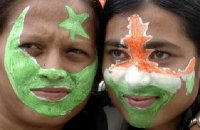
IISH Heritage Center – Message to the World
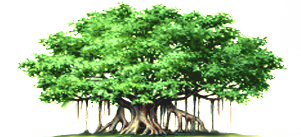

The Vedas (Sanskrit वेद véda, „knowledge“) are a large body of texts originating in ancient India. Composed in Vedic Sanskrit, the texts constitute the oldest layer of Sanskrit literature and the oldest scriptures of Hinduism. Read More: > HERE <
The Vedanga ( vedÄ�ṅga, „member of the Veda“) are six auxiliary disciplines traditionally associated with the study and understanding of the Vedas. Shiksha (śikṣÄ�): phonetics and phonology (sandhi), Kalpa (kalpa): ritual, Vyakarana (vyÄ�karaṇa): grammar, Nirukta (nirukta): etymology, Chandas (chandas): meter, Jyotisha (jyotiṣa): astronomy for calendar issues, such as auspicious days for performing sacrifices. Traditionally, vyÄ�karaṇa and nirukta are common to all four Vedas, while each veda has its own śikṣÄ�, chandas, kalpa and jyotiṣa texts. The Vedangas are first mentioned in the Mundaka Upanishad (at 1.1.5) as subjects for students of the Vedas. Later, they developed into independent disciplines, each with its own corpus of Sutras. Read More: > HERE <
A UNESCO World Heritage Site is a place (such as a forest, mountain, lake, desert, monument, building, complex, or city) that is listed by UNESCO as of special cultural or physical significance. The list is maintained by the international World Heritage Programme administered by the UNESCO World Heritage Committee, composed of 21 state parties which are elected by their General Assembly for a four-year term. The program catalogues, names, and conserves sites of outstanding cultural or natural importance to the common heritage of humanity. Under certain conditions, listed sites can obtain funds from the World Heritage Fund. The programme was founded with the Convention Concerning the Protection of World Cultural and Natural Heritage,which was adopted by the General Conference of UNESCO on November 16, 1972. Since then, 186 state parties have ratified the convention. Read more : >HERE<
Message to World – Indian Heritage on science and technology has a history of not less than 5000 years starting from the subjects of mathematics, astronomy, geometry, health science, food science, yoga, Metallurgy (science of metals), space science /air crafts technology, plant science and so on. There are thousands of books catalogued by different organizations and institutions in India and abroad, which are presently available either in the printed form or as manuscripts in palm leaves.
This history record, starts from Vedic period. The mathematics and astronomy were dealt together in hundreds of text books written in Sanskrit and in regional languages.
Mahabhaskareeya, Laghubhaskareeya, Vateswara Siddhanta, Bruhat samhitha, Sidhanta siromony and many similar books still available in the printed form with English commentaries. They give the subject matter qualitatively and quantitatively at par with the modern developments.
The books on health science, Charaka Samhita, Susrutha samhitha, Ashtanga hrudaya and so on written many thousand years ago are the part of curriculum in more than 300 ayurveda colleges in India and more than one hundred institutions outside India.
Indian heritage on the metallurgical sciences (loha thanthra, rasa saastra and so on) also goes back from the period of Yajurveda. Many ancient textbooks describe the rasa sastra and artha saastra giving detailed descriptions on the ores, minerals and methodology of extraction and purification of metals and their compounds, which has been supported by the archeological evidences.
Indian technological heritage has vast area of knowledge from metallurgy, ceramics, glass, textiles, furnaces, leather, civil engineering and architecture, granite and marble, and so on. These are clearly demonstrated in ancient Indian books, cave temples, temples, forts, palaces, etc..
Indian Institute of Scientific Heritage (IISH) was established on the Sravana Pournami day in August 1999 and registered as a charitable trust (328/99/iv) during the last quarter of 1999. Then onwards IISH has been undertaking the mission of learning and teaching the ultra ancient heritage of Bharath(India) using ultra modern scientific and technological tools.
The ultimate aim of this mission is to make every Indian proud of his heritage.
Our aim is to inform the world about the glorious scientific, rational and logical heritage of India and also inform the world to practice and adopt these message in their life to lead a happy life in the 21st century. IISH is undertaking this mission of taking the message to 100 million people before the 31st December 2010. Hundreds and thousands of mission oriented workers are taking part in this patriotic mission of spreading the message of our motherland. We learn and teach the past glory, present achievements and future aims of Indian in each and every field, taking the inspiration for the past glory of this nation.
We inform the world that this heritage of India is the property of Hindus, Muslims and Christians of India and also belongs to all beloved children of this motherland.
Thus IISH spreads the scientific, technological, spiritual, sociological, anthropological, managemental messages to the world, in such a way that these messages can be adopted for the modern world.
SRI VIDYA, Vidyas in Hinduism & Yoga Upanishads
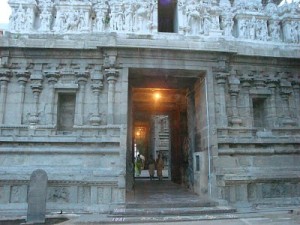
108 Upanishads | Vedanta Spiritual Library
Mess.166: A Holy Trip to Arunachaleshwara
http://taonews123.blogspot.com
ŚrÄ� VidyÄ� (also spelled „Shri Vidya“) is the name of a Hindu religious system devoted to the goddess LalitÄ� TripurasundarÄ� or simply TripurasundarÄ� (‚Beautiful Goddess of the Three Cities‘). According to British scholar Gavin Flood she is a tantric form of the goddess ŚrÄ� (also called LakṣmÄ�), consort of Vishnu. However, the late orthodox leader of the largest Samaya school of ŚrÄ� VidyÄ�, Sri Chandrasekharendra Saraswati Swamigal, says that the ŚrÄ� in ŚrÄ� VidyÄ� is a title of respect meaning The VidyÄ� and has no connotation to LakṣmÄ�. And Indian scholar V.R. Ramachandra Dikshitar states she is a form of Durga or Paravati, consort of Shiva , as well as several names from the LalitÄ� SahasranÄ�ma which call her the beloved of Shiva. The Sanskrit word vidyÄ� means „knowledge“ or „lore.“ A thousand names for this form of DevÄ� are recited in the LalitÄ� SahasranÄ�ma, which includes ŚrÄ� VidyÄ� concepts. Read More: > HERE <
The Sri Yantra (shown here in the three-dimensional projection known as Sri Meru Chakra or Maha Meru used mainly in rituals of the Srividya Shakta sects) is central to most Tantric forms of Shaktism.
Meru Chakras are frequently a central focus and ritual object for this worship of the Goddess. They are a more potent form of the Sri Yantra, since they are three-dimensional. Meru Chakras can be found in rock crystal and in metal, often a traditional panchaloha formula of silver, antimony, copper, zinc, and pewter, which enhances the flow and generation of Sri’s beneficial energies, covered in gold.
In the theology of the ŚrÄ� VidyÄ� the goddess is supreme, transcending the cosmos which is a manifestation of her. The school has an extensive literature of its own. The details of the beliefs vary in different texts, but the general principles are similar to those found in Kashmir Shaivism.
The goddess is worshipped in the form of a mystical diagram (Sanskrit: yantra) of nine intersecting triangles, called the śrÄ�cakra („Chakra of ŚrÄ�“) that is the central icon of the tradition.
SRI CHAKRA by S. SHANKARANARAYANAN – SRI CHAKRA, the king of chakras is a master plan of manifestation drawn by the divine Draughtsman on the board of the infinite, a transcript of the Transcendent, a symbol-image of the supernal verities. The spiritual and occult tradition of the worship of the Mother Goddess and the Sadhana of Srividhya are explained in sixteen chapters in terms of modern thought and understanding. Based on authentic and authoritative Tantric texts the exposition in English is inspiring and original, almost a classic in the field of esoteric literature.
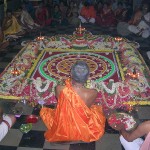
About the Author: Though his academic attainments are in Mathematics and his professional interests lie in a specialised field of industrial management, Sri S. Shankaranarayan has retained his first love for Sanskrit. In his childhood he was introduced to the ancient Sanskrit lore by his grandfather, Sri S. Narayana Iyer, who was himself a deep initiate in Sri Vidya, Later he came under the dynamic influence of Sri Kapali Sastriar. Shankaranarayanan cherishes a special regard for this tradition of the worship of the Divine Mother and his treatises on Devi Mahatmyam-both in Tamil and English have acquired an authenticity of their own. The present work on Sri Cakra, revealing as it does the depth of his scholarship, practical insight and occult knowledge, promises to be a classic on the subject. Endowed with luminous intellect, well-versed in the modes of esoteric worship and awake with an active spiritual aspiration, Shankaranarayanan is marked out to play a singular role in the resuscitation of the spiritual and occult tradition of India in terms of modern thought and understanding. -M. P. PANDIT
Buy the Book here: > www.exoticindiaart.com
- http://www.sriyantraresearch.com
- Ramana Maharshi – Sri Chakra Puja, every Friday <
- Meet International Vedanta Society, studies, friends at fb <
- Meet Kashmir Shaivism, friends and studies, at fb <
- Meet Shaktism „Doctrine of the Goddess“ at fb <
- Meet Hinduism, friends, fans, studies at fb <
- Meet Jivan Mukta, friends, studies at fb < (> Jivan Mukta <)
- Meet Prem Nirmal Holistic Counseling, studies, friends at fb <
- http://en.wikipedia.org/wiki/Flower_of_Life
UNESCO – The Tradition of Vedic Chanting
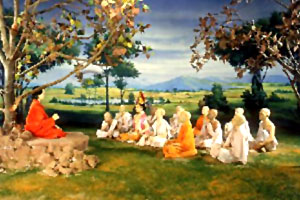
Shiksha is one of the six Vedangas
> UNESCO PUBLISHING, PURANAS & YOGA <
A shakha (Sanskrit śÄ�khÄ�, „branch“ or „limb“), is a Hindu theological school that specializes in learning certain Vedic texts, or else the traditional texts followed by such a school. An individual follower of a particular school or recension is called a śÄ�khin.- the term is also used in Hindu philosophy to refer to an adherent of a particular orthodox system.
A related term caraṇa, („conduct of life“ or „behavior“) is also used to refer to such a Vedic school : „although the words caraṇa and śÄ�khÄ� are sometimes used synonymously, yet caraṇa properly applies to the sect or collection of persons united in one school, and śÄ�khÄ� to the traditional text followed, as in the phrase śÄ�khÄ�m adhite, („he recites a particular version of the Veda“)“. The schools have different points of view, described as „difference of (Vedic) school“ (śÄ�khÄ�bhedaḥ). Each school would learn a specific Vedic Saṃhita (one of the „four Vedas“ properly so-called), as well as its associated Brahmana, Aranyakas, Shrautasutras, Grhyasutras and Upanishads. Read More: > HERE <
The Vedas comprise a vast corpus of Sanskrit poetry, philosophical dialogue, myth, and ritual incantations developed and composed by Aryans over 3,500 years ago. Regarded by Hindus as the primary source of knowledge and the sacred foundation of their religion, the Vedas embody one of the worlds oldest surviving cultural traditions.
The Vedic heritage embraces a multitude of texts and interpretations collected in four Vedas, commonly referred to as books of knowledge even though they have been transmitted orally. The Rig Veda is an anthology of sacred hymns; the Sama Veda features musical arrangements of hymns from the Rig Veda and other sources; the Yajur Veda abounds in prayers and sacrificial formulae used by priests; and the Atharna Veda includes incantations and spells. The Vedas also offer insight into the history of Hinduism and the early development of several artistic, scientific and philosophical concepts, such as the concept of zero.
Expressed in the Vedic language, which is derived from classical Sanskrit, the verses of the Vedas were traditionally chanted during sacred rituals and recited daily in Vedic communities. The value of this tradition lies not only in the rich content of its oral literature but also in the ingenious techniques employed by the Brahmin priests in preserving the texts intact over thousands of years. To ensure that the sound of each word remains unaltered, practitioners are taught from childhood complex recitation techniques that are based on tonal accents, a unique manner of pronouncing each letter and specific speech combinations.
Although the Vedas continue to play an important role in contemporary Indian life, only thirteen of the over one thousand Vedic recitation branches have survived. Moreover, four noted schools in Maharashtra (central India), Kerala and Karnataka (southern India) and Orissa (eastern India) are considered under imminent threat.
The Vedic literature that has come down to our times is attached to various traditional schools of recitation and ritual called the ‘shakhas’. All the four Vedas have more than one shakha extant. In the past, the number of shakhas studied was many times more.
According to the Mahabhasya of Patanjali, there were 21 shakhas of Rigveda, 9 of Atharvaveda, 101 of Yajurveda (86 of Krishna Yajurveda and 15 of Shukla Yajurveda, according to later authorities) and a 1000 varieties of chanting of Samaveda. Maybe, the number 1000 for the Samaveda merely refers to ‘numerous’. Nevertheless, although only 20 or so Shakhas of the Vedas are extant now, we do possess names of most of the lost Shakhas of the Rigveda, Yajurveda and Atharvaveda. Fragments of many of the lost shakhas are also available as quotations in ancient works. For the Samaveda, we do not have more than 40 names extant.
Two different Vedic shakhas might share one or more texts amongst themselves. Conversely, the distinction between two shakhas of the same Veda might result from the use of a different Samhita text, and/or a different Brahmana text, and/or different Kalpasutra text and so on. For e.g., the Baudhayana and the Apastamba shakhas use the same Taittiriya Brahmana, Taittiriya Samhita and Taittiriya Aranyaka but follow different Kalpasutras. On the other hand, the Shankhayana and the Kaushitaka shakhas use the same Samhita and Shrauta Sutra but their brahmanas have slightly different readings and their Grhyasutras are quite different.
A group or a community of people who study a particular shakha in its entirety (Samhita + Brahmana + Aranyaka + Kalpasutra + any additional texts) and perform its ritual constitute a ‘charana’. For instance, Brahmins who study the Taittiriya Samhita/Brahmana/Aranyaka together with the Kalpasutra of Apastamba say – “I follow the Apastamba charana’.
In certain cases, we have instances of ‘mixed shakhas’. For instance, the followers of Shakala shakha have adopted the Kalpasutra of Ashvalayana. The Ashvalayana shakha, which had the now well-known Ashvalayana Sutra, has in turn lost oral traditions of its Samhita. Likewise, the Kaushitakins of Kerala often use the Samhita of Shakalas.
The various shakhas of the Vedas were, at one time, spread throughout South Asia. Their geographical location has not been constant down the ages, as communities of Brahmins professing a particular shakha migrated from one part of India to the other, or adopted another shakha when it became impossible for them to sustain the tradition of their own shakhas.
It is quite certain however, that the tradition of recitation of the Vedic texts originated in north India, and this region was the area where almost all the shakhas originally arose. From various sources, we can determine the following geographical distribution of Vedic Shakhas at various intervals of times, and their present state of survival:
YOGA, TREE AND OUR UNIVERSE
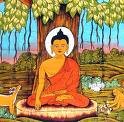
The Originar of Hatha-Yoga
Tree is the highest evolved form in plant kingdom. Man is the highest evolved species in Animal kingdom. Mushrooms are the best fungi visible on this planet. There is commonality of forms among all these highest evolved forms among different type of life-forms -Tree-like structure.Man is a cerebro-spinal being sheathed within a fleshy body. Most evolved form of cell is neuron that mediates consciousness is Tree-like structure. Surprisingly, most powerful thing that mankind achieved viz. atom bomb , produce Tree-like clouds after exploding on the surface.
Tree-like structure in Nature!
One can find out where else do Tree-like structure in nature exist. Pliny, the Younger linked the eruption of Vesuvius eruption in 79 A.D. with Italian umbrella pine. It is now an established scientific fact that the most powerfur process within earth, volcanic plumes that move inside earth is umbrella-shaped with a column & umbrella spinning about vertical axis( Tree-like). The most terrible force on the surface of the earth are the Tornados which are again Tree-like shapes with a column & an umbrella. Tree-like shape is found in other very powerful phenomena like lightening flashes, electric sparks, river delta, snowflakes, coral .
Tree-like structure is characteristics of every visceral system. Biologists trace this form in the mosses, lichens, shrubs, root system, mammalian lung bronchioles, cells of nervous system, veins & arteries forming cardio-vascular system. Wheresoever there are branching system, that invariably culminate in a Tree-like structure.
Tree & Fractal Geometry
In last fortnight, a brilliant paper was published in ‚Advances in Soft Computing“, under the title“Algorithms for Tree-like Structure Generation“ by Anna Romanowska, a neuro-anatomist et al. The team characterised Tree-like structure as that form which bifurcates but do not form any cycles. The team picked up the concepts of fractal geometry & fused with algorithms to create a Recurrent Algorithm. Self-similarity and repetition of sequence( iteration) is generated by a bifurcating cascade. The team concluded that if living system are generated recurrently, complex organic structures like roots, bronchial system in lungs emerge.
Now that an algorithm for Tree-like structure has been generated, it will be feasible in a decade to manufacture on mass scale silicon bronchial/ cardio-vascular/ neural system .
Before the advent of Fractal geometry by Benoit Mandelbrot during 1970s, the question of Tree-like structure had perturbed many a great minds. Hisao Honda of University of Kyoto published a paper on “ Description of the Form of Trees by the parameters of the Tree-like body“ in the Journal of Theoretical Biology, May, 1971. Honda concluded that Tree architecture maximizes flow access. He found stastitical similarity in living & non-living world, among branching in living system & geological & geophysical system.
- Meet Swami SIVANANDA friends, yoga, studies, at facebook <
- Meet Bhagavad Gita friends, yoga, studies at facebook <
- Meet Patanajali friends, yoga, studies at facebook <
- Meet Buddhism, friends, studies, Medicine at facebook <
- Meet Paramahansa Yogananda friends, groups, studies at fb <
- Meet Raja Yoga, Friends, Group, studies at facebook <
- Meet IYENGAR (B.K.S.), Yoga, Friends, Studies, Groups at fb<
- Meet Swami Vivekananda, Yoga, Studies, Friends, Groups at fb<
- Meet Bhagavad Gita, Yoga, Studies, Friends, Groups at fb <
- Meet Ramana Maharshi Groups, Friends, Studies, Fans at fb<
- Meet Hinduism, Groups, Friends at facebook <
- Meet Kashmir Hinduism, Studies, Friends at facebook <
- Meet Shaktism and Devi the Godess at facebook <
- Meet Saundaryalahari: Wave of Bliss by Shankaracharya at fb <
- Meet Arsha Vidya Gurukulam, Studies, Friends, Fans, at fb <
- Meet Advaita Vedanta,Groups,Studies, Vivekananda at fb <
- Meet Yogi Yogendra Nath, Studies about Goraksha at fb <
- Meet Jaya Kula and the three ways of Practicing tantra at fb <
- Meet VASTU, Friends, and Study Groups at facebook <
- Meet Jyotish, Friends, and Study Groups at facebook <
- Meet Sacred Geometry at facebook <
- READ MORE HERE:
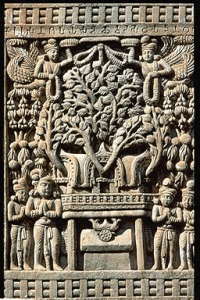
Morphic field & Morphic Resonance!
Tree-form is found in lower kingdom of Animal as well as Fungi. Jelly fishes or the polyp, these are invariably shaped like Trees. The colonies of proliferating marine organism replicate this form. It is interesting that jellyfishes which have no neurons & man with maximum neurons are essentially same in shape. Great Scottish biologist, Sir D’Arcy Thompson wrote in 1917 „On Growth and Form“, to analyse patterns & shapes in nature. His erudite tradition sd being carried by Rupert Sheldrake, a British biologist. He has done extensive work on the concept of morphic field & morphic resonance. By morphic resonance, he explains the influence of Like upon Like by which a connection among similar fields is established. He has shown in his work example of crystallization. It is very difficult to crystallize a new compound for the first time. Once it is done, a morphic field emerge. It is easier next time if someone does elsewhere in the world. There is a cumulative influence & it gets easier & easier to crystallize the compound. There is an accelerated rate of crystallization . Similarly, in learning among rats, this phenomena has been experimentally confirmed. It is difficult for a rat to pass through a maze for the first time. But, once a rat does this, another rat elsewhere does it much easily. And with each learning , there is spontaneous spread of new habits. For Sheldrake, evolutionary spread of new habit is not genetic but depends on a kind of collective memory due to morphic resonance.
This can be easily comprehended in case of human. It was very tough to manufacture clock or VCD or computer. More people are manufacturing, easier it is getting to manufacture. Watches, transistora & VCDs are now cottage industry. Who knows in future, robotics will emerge as similar kind of easily handled industry and there will be garages in every nook & corner of city to repair robots or even remodell robots by neighbourhood mechanic.
Sheldrake further proposes the concept of the „Memory of Nature“. Habits of nature depend on non-local similarity reinforcement. Through morphic resonance, the pattern of activity in self-organizing system are influenced by similar patterns in the past. He brings back the idea of Carl Jung‘ collective unconscious.
Examining Growth of Tree-Form!
I find the concept of morphic resonance appealing. That can explain this frequent recurrnce of similar pattern in nature. If we ponder over the shape of DNA & its future. The fluid around earth’s inner core creates a helical movement and generates magnetic field. The geodynamo of the earth is a self-replicating system that help explain the continuity of magnetism in earth’s core , otherwise it would have dissipated within 20,000 years. Now, the transformatory biological molecule,DNA, is helical as well as self-replicating. Within geo-physical processes, we know that Tree-like plumes are created. Now, this geophysical structure resonates throughout future evolution of biological world. For every plume within, there is a tornado on the surface. This first form of powerful process recurs at the level of the most developed categories at various levels, may it be fungi, or plants or animals or cells. And, that form recurs in even man-made powerful processes like atomic explosions.Upon visualizing this sequence, I can very well predict that the most successful biological robots or most efficient spaceship for planetary travels would have Tree-like architecture. Our Discovery spaceship is a poor materialization of that critical architecture.
Tree & bifurcation!
This Tree-like structure itself is generated by recurrent self-similarity which results due to behaviour of a dynamic system. Now, the chaos theorists have worked out very well that how in a dynamic system , a stage of crisis is set in and at the point , there are two possibilities for the system to transform. Sometimes, the system oscillates between two possibilities as found in certain chemical clocks extensively investigated by Nobal laureate Ilya Prigogine.Most of the times, the branches grow further and then bifurcate. This is iteration of self-similarity that later results into Tree-like structures.
If this kind of bifurcaing iteration is fundamental to our changing Reality which is dynamic, and there is morphic resonance, one can draw the contours of this phenomena of emergence of Tree-like structure at a higher level.
End of biological evolution!
The bifurcation, that determines DNA-replication to cell-division, has finally achieved its destiny in the biological world in the form of Human beings. We are the highest biological form and the biological evolution has now concluded. There is no further scope of biological evolution beyond us.Perfect biological bifurcating branching system has been achieved. Our lungs, our cardio-vascular system, neural system .. everything has emerged as mere consequence of cascading bifurcation. Surprisingly, we have greater number of most evolved cells viz. neurons (200 billions) which themselves replicate own form at macrolevel. The cerebro-spinal system is a magnified neuron. We are the only animal to walk on 2 legs. Penguins do perform but lack other binarities. We have two legs, two hands, two nostrils, two ears, two testicles, two mammary glands, two eyes, two kidneys, two hemispheres in brain, two atrium, two ventricles in heart, two excretory points, two lips, two jaws. Our thinking pattern is also binary. Our categories are in twos- good/bad, high/low,sacred/profasne, self/other… We donot yet understand that this duality in thought is rooted in hemispheric brain or in fractal geometry. There is no more bifurcation & branching possible in bodily architecture of human beings. This is the end-point of biological evolution. Now, mankind is on verge of developing biological robots & higher order machine consciousness therby imbuing consciousness to physical world bypassing the biological evolution. We are becoming the co-creator of the Universe as well as agent to accelerate self-consciousness of physical matter in the universe.
Trees are our cousin!
Now, the issue of Tree-like structure resonates into our collective psyche. Tree is the source of wisdom, healing, nourishment, power. Bible myth has Tree . Newton discovered moodern science sitting under an apple Tree. Buddha discovered non-theistic self-awareness sitting under a peepul Tree. In Tibetan tradition, powerful meditation requires visualizing Tree of lineage with various Gurus on different branches. These kind of visualization has transformative effect on our consciousness. In every culture, Tree occupies a significant position in rituals & mythology. We feel special feeling with Tree. Our romantic mood, our wisdom, contemplative mood, aesthetic mood.. orbit around physical & metaphoric Tree. Tree have power to transmit some kind of healing power to us. Tree are the source of healing body through fruits & herbal medicine . Tree heals our body, mind as well as soul, if any. The processes involved may be a kind of morphic reonance that vitalizes self-similar cardio-vascular, respiratory & neural system.Trees are our morphic cousins. We feel guilty & hurt when trees are cut or when those are under environmental threat.
Future?
One thing is certain. Future robots & spaceships which would be most efficient to survive would have Tree-like architecture. We would have very little to do with blooming of age of nanotechnology, biotechnology & Artificial intelligence. Successful creation of algorithm for Tree-like structure has made it more likely that artificial human organs can be manufactured at industrial level. When death will be conquered after successful download of Memories & large scale diffusion of bionics, We would have enough time to resonate with biological Trees in solitude & steer mankind towards a spiritual evolution as biological evolution from DNA-pathway has reached a dead end!
(Niraj,1.11.2009)
Puja Net, (free) Audio Library, Yagya Group
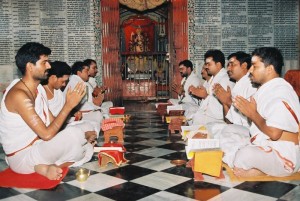
* AUDIO LIBRARY (Lakshmi Mantras) *
> VEDA, VEDIC SCIENCES, PANCHANGAM <
> THE 12th BAVA VEDIC ASTROLOGY CONFERENCE <
PūjÄ� (Devanagari: पूजा) (alternative transliteration Pooja, Sanskrit: reverence, honour, adoration, or worship) is a ceremony of gratitude or a religious ritual performed as an offering to various deities, distinguished persons, or special guests. It is done on a variety of occasions and settings, from daily puja done in the home, to temple ceremonies and large festivals, or to begin a new venture. Puja is modeled on the idea of giving a gift or offering to a deity or important person and receiving their blessing. The two main areas where puja is performed is in the home and at public temples. There are many variations in scale, offering, and ceremony. Puja is also performed on special occasions such as Durga Puja and Lakshmi Puja. Puja or Pooja is also a Hindu female first name. Read More: > HERE <
In Hinduism, Yajña (Sanskrit यज्ञ yajña; also anglicized as Yagna, Yagya or Yadnya) is a ritual of sacrifice (Monier-Williams gives the meanings „worship, prayer, praise; offering, oblation, sacrifice“) derived from the practice of Vedic times. It is performed to please the gods or to attain certain wishes. An essential element is the sacrificial fire – the divine Agni – into which oblations are poured, as everything that is offered into the fire is believed to reach the gods. As the name of the service, the term Yagna is linguistically (but not functionally) cognate with Zorastrian (Ahura) Yasna. Unlike Vedic Yajna, Zoroastrian Yasna has „to do with water rather than fire“ . Read More: > HERE <
The Yagya Group was formed by Ben Collins and Sri Narasimha Bhattar following a trip to India in 1998. After enjoying several weeks of traditional Hindu yagya ceremonies, we returned and found that a surprising number of people in America were interested in access to effective and affordable yagyas. So we began offering them monthly, sharing the costs amoung the sponsors and donating the proceeds to the Venkateshwara temple in Malibu, California.
As the group expanded we wanted to be able to offer a wider variety of yagyas and use more priests. So we were fortunate enough to purchase a facility in Kanchipuram, a wonderful temple town south of Madras. With that, we were able to offer a greatly expanded variety of yagya services. Seetharam was planning to move to India and so we were fortunate to be able to have him manage all the puja.net yagyas in person.
With the new facility and Seetharam’s on-site presence, we currently offer yagyas every single day of the month in Kanchipuram!
Not surprisingly, the group has expanded to include participants from around the world; US, Europe, Scandanavia, South America, Africa, Australia and New Zealand. The group continues to grow on the basis of the consistent results that the yagya performances bring.
Please address your comments, questions, or requests to me via email.
Our mission is to make yagyas available in a way that is as close to the timeless traditions of the Vedas as is possible. With that in mind, our mission standards are:
-
All yagyas will be performed in the most traditional and authentic manner possible, without regard to cost or time considerations.
-
All yagya services will be priced so that they are within financial reach of any individuals who wish to participate. The price of the yagya service should bear a direct correlation to the cost of performing the yagya.
-
Service, not profit, is the driving motive behind puja.net.
-
Our sponsorship of yagyas is intended not only to result in positive benefit for ourselves. Through our participation, we honor and preserve the Vedic traditions in India, and provide meaningful employment for highly qualified priests.
KASHMIRI OVERSEAS ASSOCIATION, INC.
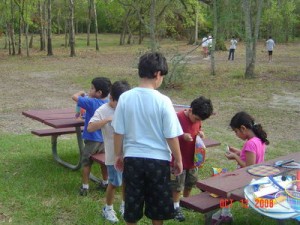
> SAVE A SMILE, Sponsor a Child <
> KASHMIR SHIVAITEN IM HIMALAYA <
> Kashmiri Overseas Association USA <
The KOA organization has its origins in the early meetings of several Kashmiri > Pandit < families in the Washington D.C. and Maryland areas. These families soon came to realize the importance of building a community structure which could include other families too in a bond for mutual preservation and growth. As more families and members joined the founding group, the organization evolved to become a national outfit with regional chapters, documented bye-laws, systems and procedures as well as a non-profit status to better seek donations and pursue community actions.
The KOA Community: > * H E R E *<
Shriya Bhat Mission Hospital and Research Center: Since then the hospital is working as a multi-disciplinary clinic. Over the years some amenities have been added like an air conditioner, refrigerator, ECG machines, glucometers, nebulizers, traction apparatus etc. A medical van has been kept at the disposal of the sick patients. The Center is open to every body irrespective of cast or creed, region or religion.
There is a work force of consultants in internal medicine, neurology, general surgery, urology, orthopedics and dermatology in regular attendance. Patients are registered for examination and treatment round the week. The mission hospital has so far rendered its services to more than 35 thousand patients. All the patients receive a free 3-4 week supply of available medicines. A mini laboratory helps with some basic investigations, again conducted free on the patients.
Sharda Peeth Rishi Model School, Udhampur, J&K: In 1990, terrorism and sectarian violence caused nearly 500,000 Kashmiri Hindus to flee the land of their ancestors, the fabled valley of Kashmir in the Indian state of Jammu and Kashmir. These victims of terrorism, refugees in their own country, left behind virtually all of their worldly possessions as they had to flee under threat to life and honor.
As in most situations, the worst sufferers of this violence were the children of this displaced people. With their parents consumed with, yet often unable to, provide the basics of living to their families these unfortunate children were often left without the only hope for a better life – a healthy education.
The Rishi Memorial School was started in the mid-1990s with contributions from a group of US-based Indian-Americans concerned for the future of these indigent children. This remarkable experiment in social self-service began with only about a dozen students and one teacher.
Save a Smile – Sponsor a Child: The refugee camps in Jammu and Kashmir house hundreds of thousands of Kashmiri Pandits displaced from their homes as a direct result of the Islamic militancy in the valley. This tragedy has resulted in children being denied the opportunities that we take for granted. Since 1995, the Kashmiri Overseas Association, USA has implemented the Sponsor-A-Child Program for the age group 5 year olds to 17 year olds. This program aims to provide educational opportunities to the children directly affected by the tragedy. While individuals worldwide have contributed to these programs more children are in need of our financial support than currently available funds can support, there are many more that deserve our assistance. Goal: To provide tuition, school supplies and living expenses to school children who are currently living in refugee camps.
Religion – The religious practices of Hindus of Kashmir (popularly known as Kashmiri Pandits) revolve around the worship of Shiva and Shakti. All other deities (gods and goddesses) of the traditional Hindu pantheon are worshipped as various manifestations of Shiva and Shakti. Shiva is the Supreme Lord of the universe and Shakti, the Universal Mother Goddess, is his eternal companion.
Region Kashmir: Poetry of Nature – Set like a jewelled crown on the map of India, Kashmir is a many-faceted diamond, changing its character with the seasons always extravagantly beautiful. Three Himalayan ranges – Karakoram, Zanskar and Pir Panjal – snow-capped, majestic, frame the landscape from northwest to northeast. They are the birthplace of great rivers which flow down into the valleys below, forested with wild orchards and lily laden lakes.
BYO, Yogaverband Österreich: www.yoga.at : > ”Eintreten in das göttliche Bewusstsein” < , Ref.: Bettina Bäumer, Ort: St. Virgil Salzburg, 23.07.10 – 25.07.10
- Programs: http://koausa.org/koa/
- Sponsor-A-Child
- Educational Assistance Program
- Rishi Memorial School
- Medical Funds
- Shriya Bhatt Mission Hospital
- Achievement Awards
- Awards & Recognitions
- Success Stories
- Projects
- Downloads
- Official Records
- Applications & Brochures
- Publications
- Newsletters
- and more…
Vedic Astrology: BAVA „Health and Healing“

> BAVA’s 12th Annual Conference 2010 <
‚Health and Healing‘, 22nd -26th April 2010
> FREE Vedic Astrology, Buddhism,Feng Shui, and more…. <
Jyotiṣa (Sanskrit jyotiṣa (Devanagari ज्योतिष), from jyótis- „light, heavenly body“: also anglicized Jyotish and Jyotisha) is the Hindu system of astrology (also known as Indian astrology, Hindu astrology, and of late, Vedic astrology). Read More: >HERE<
Vastu Shastra (vÄ�stu śÄ�stra, also Vastu Veda, „science of construction“, „architecture“) is a traditional Hindu system of design based on directional alignments. It is primarily applied in Hindu architecture, especially for Hindu temples, although it covers other applications, including poetry, dance, sculpture, etc. The foundation of Vastu is traditionally ascribed to the mythical sage Mamuni Mayan. While Vastu had long been essentially restricted to temple architecture, there has been a revival in India in recent decades, notably under the influence of V. Ganapati Sthapati of Chennai, Tamil Nadu (b. 1927), who has been campaigning for a restoration of the tradition in modern Indian society since the 1960s. Read More: >HERE<
Vedic astrology was developed by the ancient sages of India over 5000 years ago. Called Jyotish, the science of the light of life, it is part of the Vedic wisdom.
This includes Ayurveda, Vastu (Vedic architecture) and Yoga.
The Vedas and the vast Vedic Literature, mankind’s oldest and most sophisticated body of knowledge, detail the relationship between astronomy, astrology and human beings.
Vedic astrology is a powerful medium which can be used to understand ourselves through the study of the stars and the constellations.
It predicts and offers remedies for mundane difficulties as well as guide posts to an individual’s spiritual path.
> Meet VASTU, Friends, and Study Groups at facebook <
> Meet Jyotish, Friends, and Study Groups at facebook <
> Meet Sacred Geometry at facebook <
> Vedic, Vedic Sciences, Panchangam <
> ÖAG- Österreichische Astrologische Gesellschaft Wien <
LIFE POSITIVE EXPO 2010
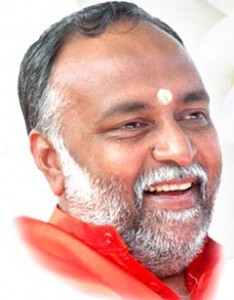
Swami Sukhabodhananda
Founder Chairman of Prasanna Trust
Life Positive is a body- mind-spirit magazine promoting a holistic understanding of the unity of life and self with an emphasis on personal growth. It was started in April 1996 by Aditya Ahluwalia, chairman of the organisation, and Parveen Chopra, founder-editor, under the aegis of Magus Media Pvt Ltd. Produced by a team of professional journalists, some of who are also active seekers, Life Positive covers the beat of spiritual wisdom, techniques, gurus, personal growth therapies, alternative medicine, holistic healers and organisations with insight, accuracy, thoroughness and discrimination.
Site Design & Development:
The site Portal services: email, search engines and discussion boards are provided by third-parties, Everyone.Net and Google.com .
For further details, write: webmaster@lifepositive.net
In June 2005, the group launched its second publication, Life Positive Hindi. Within its short span of existence, the magazine has earned a strong readership base. The group has published a number of books, including Parallel Journeys and Nine Days to Nirvana and organised prestigious music festivals. The magazine is edited today by Suma Varughese who has been with the magazine since its inception and is the former editor of Society magazine.
Life Positive is fortunate to have Mr D.R. Karthikeyan, former chief of the CBI, as President. It also has a panel of eminent names as advisors including . Mark Tully, Kiran Bedi, Devieka Bhojwani, M Madhvan Nambiar, K M S ‚Titoo‘ Ahluwalia, G Venkatesh Rao , and Parveen Chopra.
